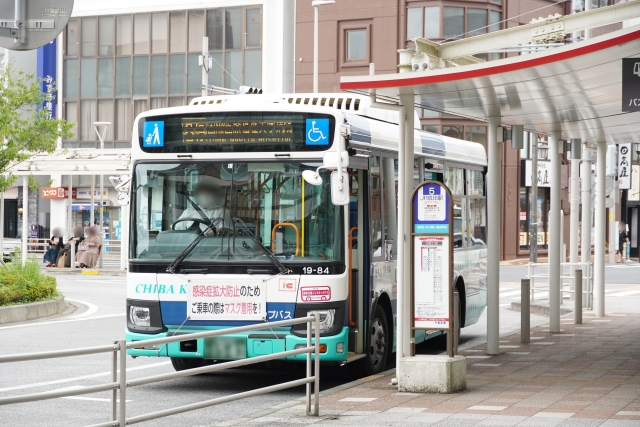Whether you’re a first-time visitor to Japan or a seasoned traveler looking to explore off the beaten path, riding a local bus can be a rewarding and economical way to see the country.
This guide will walk you through the process of using local buses in Japan, from identifying the right bus to paying your fare.
How to Use a Local Bus
In Japan, local buses are an essential mode of transportation, filling in the gaps where trains don’t run.
They are particularly useful for accessing suburban and rural areas.
While it might seem a bit daunting at first, riding a local bus in Japan can be straightforward once you understand the steps involved.
STEP 1: Identify Bus
Bus stops in Japan often service multiple routes.
Each bus line is usually represented by a number or a combination of letters and numbers, with the terminus of the route also displayed.
You can find this information on electronic signs on the front and side of the bus. Identify your bus by matching the bus number and route to your intended destination.
STEP 2: Get on Bus
Once you’ve identified your bus, the next step is to wait for it at the bus stop.
Japanese buses are typically boarded from the rear door, although one-step buses allow you to enter from the front door. Remember to let departing passengers exit before you board.
STEP 3: Understanding Fare System
There are two primary fare systems for local buses in Japan:
- Flat Fare system:
Used in cities like Tokyo and Yokohama, the fare is the same regardless of how far you travel. You pay as you board. - Distance-based Fare system:
In other areas, the fare depends on the distance traveled. You take a ticket when you board the bus, and this ticket has a number that corresponds to the stop where you boarded. The fare changes as the bus proceeds, with the current fare for each boarding point displayed on an electronic board in the bus. You pay as you exit.
STEP 4: Fare payment
Bus fares can be paid using cash or a prepaid IC card like Suica or Pasmo.
If you’re using cash, please note that exact change is needed, as drivers do not give change. If you’re using an IC card, simply tap the card on the reader when you board and again when you exit.
STEP 5: Alighting at Your Stop
When your stop is approaching, press one of the stop buttons on the bus to signal the driver.
If you’re using the Distance-based Fare system, prepare the correct fare or your IC card to pay as you exit at the front of the bus.
Additional Tips
Beyond the basic steps, here are some additional tips to enhance your bus riding experience in Japan:
| Tip | Details |
|---|---|
| Arrive Early | Buses in Japan are typically very punctual. Arrive at the bus stop a few minutes early to ensure you don’t miss your bus. |
| Use Bus Apps | There are numerous mobile apps that provide bus routes and timetables in English. These can be very helpful for planning your journey. |
| Be Mindful of Others | Japanese buses are often quiet, and loud conversations or phone calls can be considered rude. Be mindful of others and keep noise to a minimum. |
With these steps and tips, you should be well-equipped to navigate the local bus system in Japan. Happy traveling!
Summary of Key Points
Let’s summarize the key points you should keep in mind when using local buses in Japan:
- Identify the right bus: Check the number and route of the bus to ensure it’s heading towards your intended destination.
- Boarding: In most cases, board from the rear door. Allow passengers to exit before you board.
- Fare system: Understand the difference between a Flat Fare system and a Distance-based Fare system. In the former, you pay when you board, while in the latter, you pay when you exit.
- Paying for your journey: Have exact change if using cash or use a prepaid IC card like Suica or Pasmo. Remember to tap the card when boarding and exiting.
- Alighting: Press the stop button in advance of your stop. If you’re under the Distance-based Fare system, prepare to pay or tap out as you exit at the front.



comment